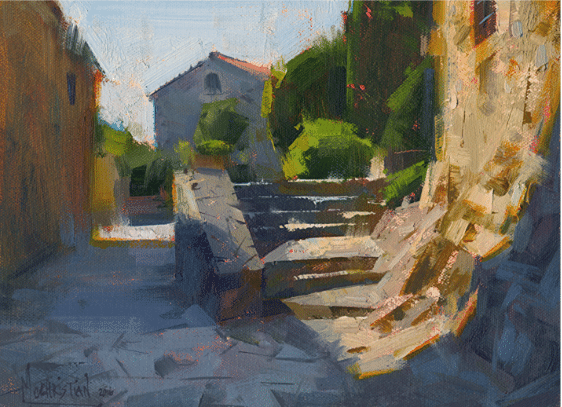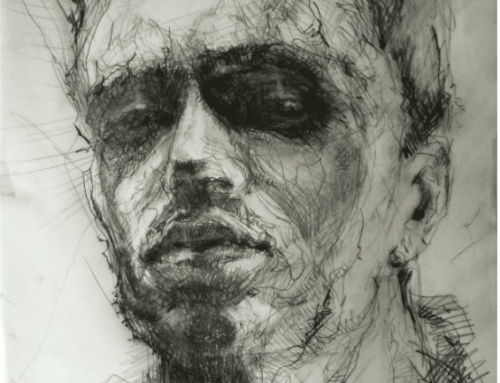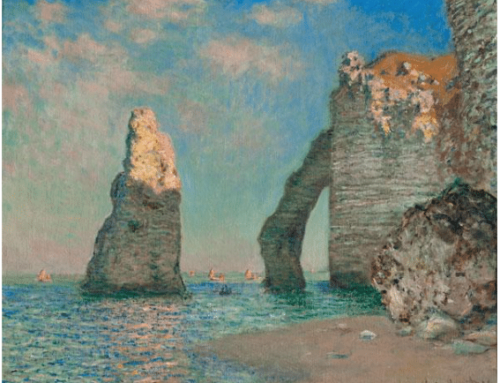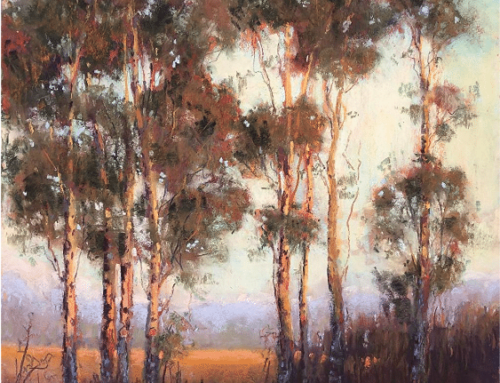Once you master some of the technical basics of plein air painting, you might start to wonder, how you give your work more life? One place to start is with feeling – and getting it into your work isn’t as hard as you think. The way to recognize it is if you see something and immediately get a strong sense of genuine excitement over what you’re setting out to paint. What you do with that excitement – that’s where technique comes in.
So one way to go is to start with feeling – and then immediately think DESIGN, with attention to just two things, composition and contrast.
It’s hard to overstate the importance of composition; get a good one and you’re almost guaranteed a good painting. Add an area of strong contrast, and you’ve got an even better chance at a masterpiece. But even seasoned plein air painters often find it challenging to get from chaos to composition. One solution is a viewfinder – but the pros know that a viewfinder only gives you the composition, not what you saw that made you excited mor what you want to convey about it. Having both is ideal. So….
Step 1 – Breathe
An artist I know who swears by her viewfinder told me it’s important for her to “breathe before you look too hard.” She walks around a painting location (without her gear) first, but she isn’t looking for “what to paint.” She’s mostly just taking deep breaths and “checking in with herself,” she says. She’s looking, but not for something to paint – rather, for something to feel. Her standard operating procedure: Feel it first, get an idea for a painting, then go to town on the viewfinder.
Composition is next – and it’s not something nature hands us on a silver platter. Nature (or a city street, or a sailboat or what have you) always offers us Too Much Information. That’s why you have to find a view – that is, a composition – in nature, which means you have to impose it and create one by a process of selection. And even then what you leave out is as important as what you put in.
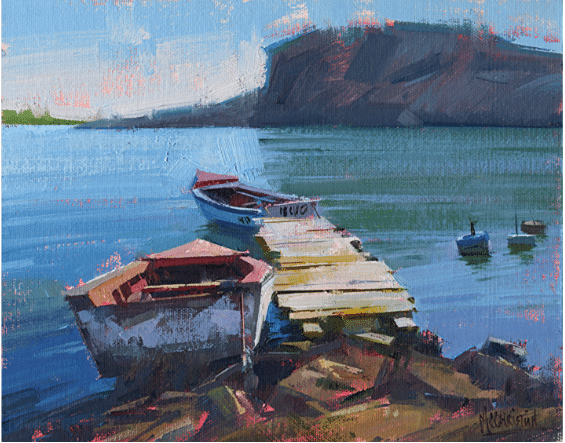
Jennifer McChristian, Hope Floats, 8×10, oil
It’s just the nature of nature. Cure, color mixing is tough at first, but it gets easier and intuitive with practice. Arguably the most challenging thing about plein air painting for beginners is imposing order on nature’s overwhelming chaos. And it’s the one aspect of plein air that isn’t the least bit intuitive. It’s learned from painting, from teachers, and from looking at other paintings.
A great way to learn composition is to do thumbnail sketches of other artists’ successful paintings. Doing this will help you internalize basic guidelines for compositions that “work.”
Here’s how. Pick out a few plein air paintings with strong compositions and make rough sketches to figure out exactly what makes them strong. Don’t worry about making a perfect miniature copy of the painting – use the thumbnail sketch to explore what are the big shapes and the major lines (the edges of the shapes) and the values doing, and see how they relate to 1. the four sides of the painting and 2. to each other (in that order).
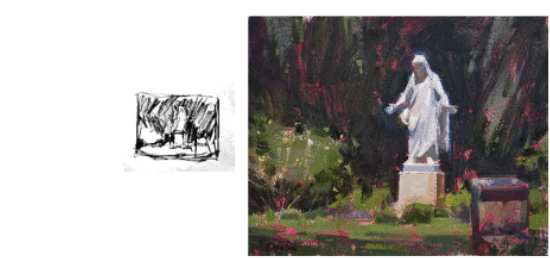
Jennifer McChristian, The Sage, 8 x 10 oil with thumbnail sketch next to it.
Ask “where does my eye go in this painting?”
Instead of drawing a thumbnail, if you’re comfortable using graphics software you can copy and paste the model painting into it. Then, based on how you think the eye moves through the painting, use the “draw” or “paint” tool to create a Tactical Diagrammatic Flow Map, or TDFM (that’s official “painterspeak” terminology right there, you know – I totally didn’t just make it up! 😉
Here’s a good plein air painting with a strong composition. It’s a 10 x 8 in. oil on panel plein air by Jennifer McChristian titled “Vineyard Path”
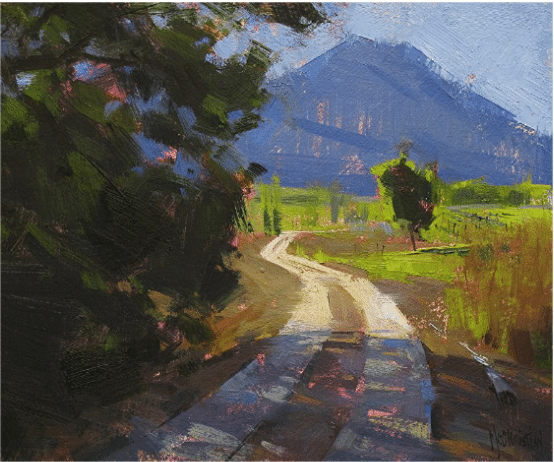
Jennifer McChristian, Vineyard Path, oil, 8 x 10 in
And here’s my TDFM:
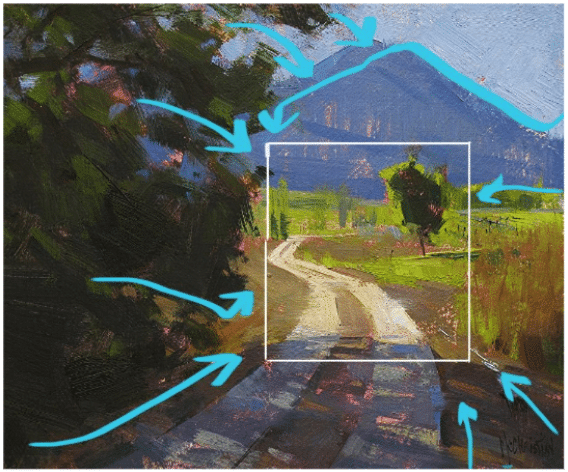
Pay attention to the blue arrows – that’s how I think the shapes (their edges, to be precise) “move the eye” toward the center of the painting (or at least toward the center of interest). Notice that is the composition’s area of strongest contrast, often part of the “focal point” or “main point of interest.” I used a white square to identity the area of the main point of interest – the light across the path and the way it outlines the foliage of the middle-ground tree. Everything is arranged so that our eyes go right to that area of the painting, if not right to the tree, and stay there. That (the focal point) is where we get the strongest juxtaposition of dark and light. The arrows stand for directions the eye moves in; notice how we’re never pointed outside the painting, always back in.
If you just keep those two things in mind, composition and contrast, you’ll have plenty to work on. If you can add the third thing – feeling – you’ll be hitting them out of the park in no time.
Today’s featured artist is California artist Jennifer McChristian. Her video on simplifying complex scenes into approachable plein air compositions is called Painting with Style. Check it out here.
Art Exhibition: Summer in New England
June 21- August 17, 2024
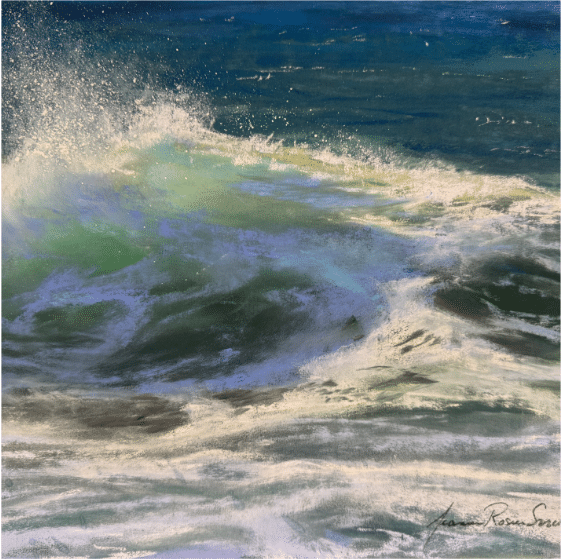
Jean Rosier Smith, FlowPastel, 11 x 14 in
A sunlit summer studio and the brilliant colors of summer flowers…. “The lure of light, the atmosphere drawing artists to a particular place this time of year often result in paintings that feel peaceful and beautiful,” says Susan Powell, owner of the coastal Connecticut gallery hosting the exhibitio0n “Summer in New England,” now in its 21st year.
On view June 21 through August 17, 2024 will be artwork in styles ranging from traditional realism to contemporary impressionism, all celebrating New England’s idyllic marshlands, beaches, seascapes, dinghies, sailboats, shorebirds, and breezy summer nights.
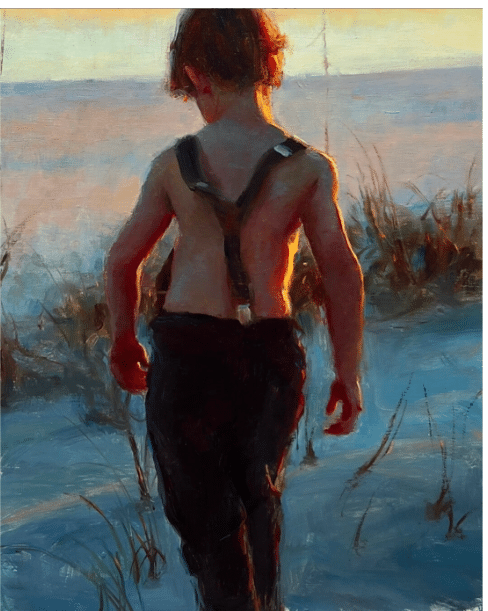
Timothy Rees. Evening Mosey, 12 x 9 in. @reesfineart,
On “Evening Mosey,” (above), the artist says, “I am captivated by the many facets of humanity, and none more so than that of childhood; the transition from a creature barely aware into one of discovery, teetering on the cusp of growing up. I strive to illuminate these moments to viewers, often raw and untampered by fear of judgments, that we all once shared. In the case of ‘Evening Mosey’, it is my son – out for an evening stroll at the beach. The whole world was his. It’s a moment marked by his confidence and playfulness and heightened by the drama of the setting sun. While the sun has set on that moment, the painting remains, a reminder to hold onto those most admirable qualities of our youth; those that may slip from us as time marches us forward into adulthood.”
In all, 30 award-winning artists including Del-Bourree Bach, Paul Beebe, Zufar Bikbov, Kelly Birkenruth, Grace DeVito, Neal Hughes, Tom Hughes, Andrew Lattimore, Leonard Mizerek, Cora Ogden, Jeanne Rosier Smith, George Van Hook, Sandra Wakeen, and Christopher Zhang will be included.
Check out additional paintings in “Summer in New England” here or at www.susanpowellfineart.com Madison, CT

